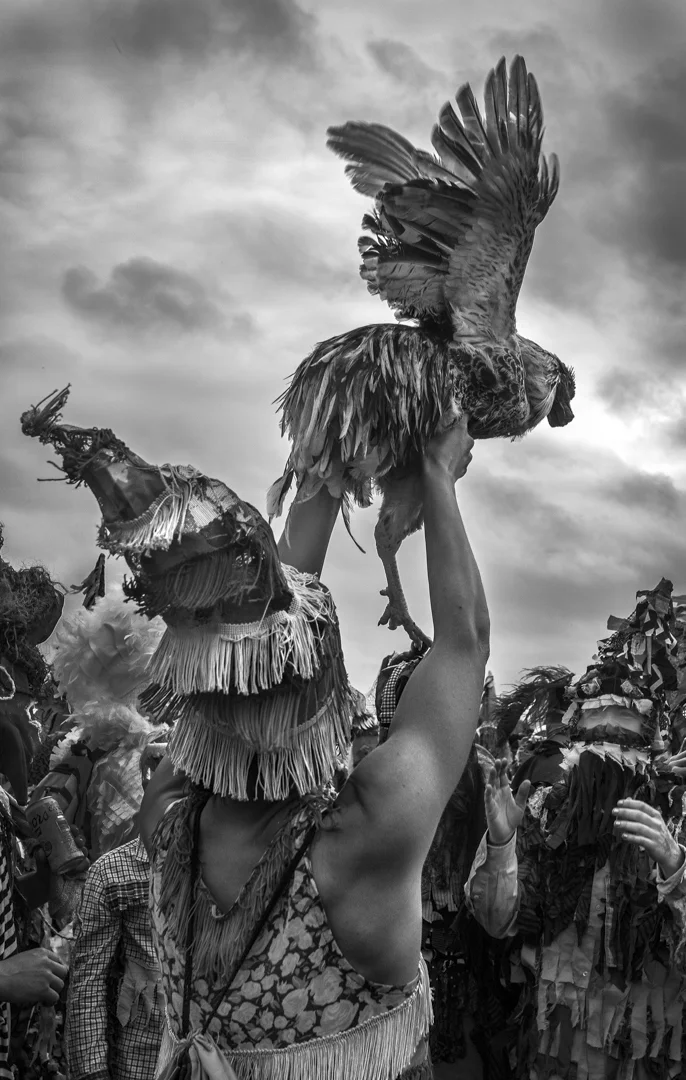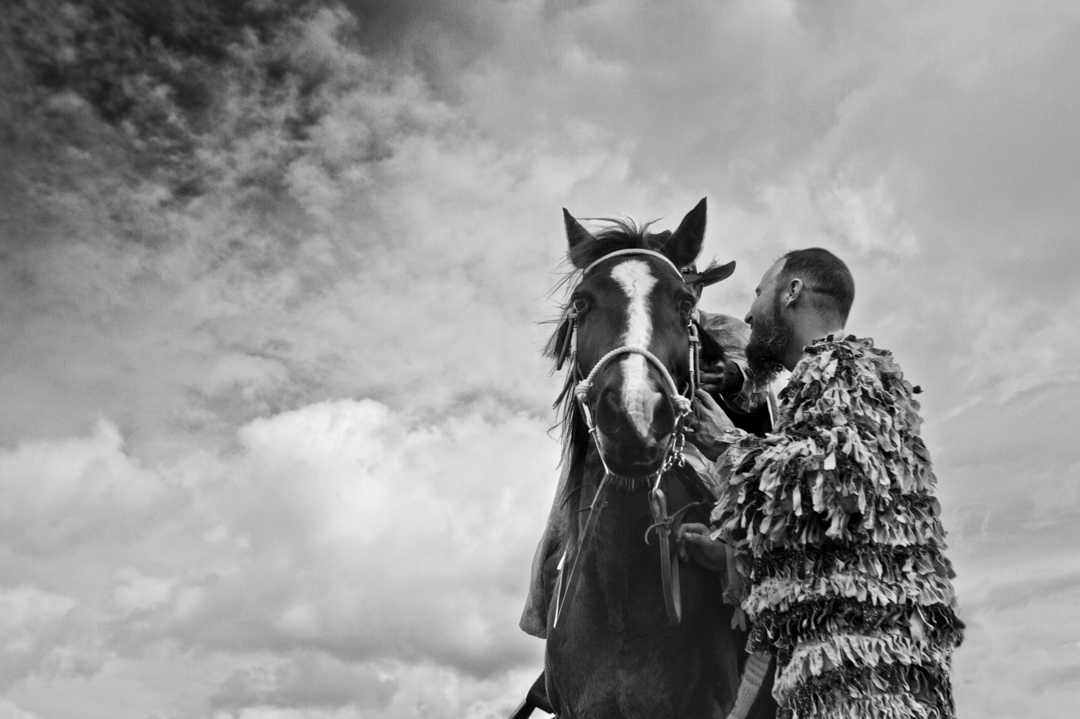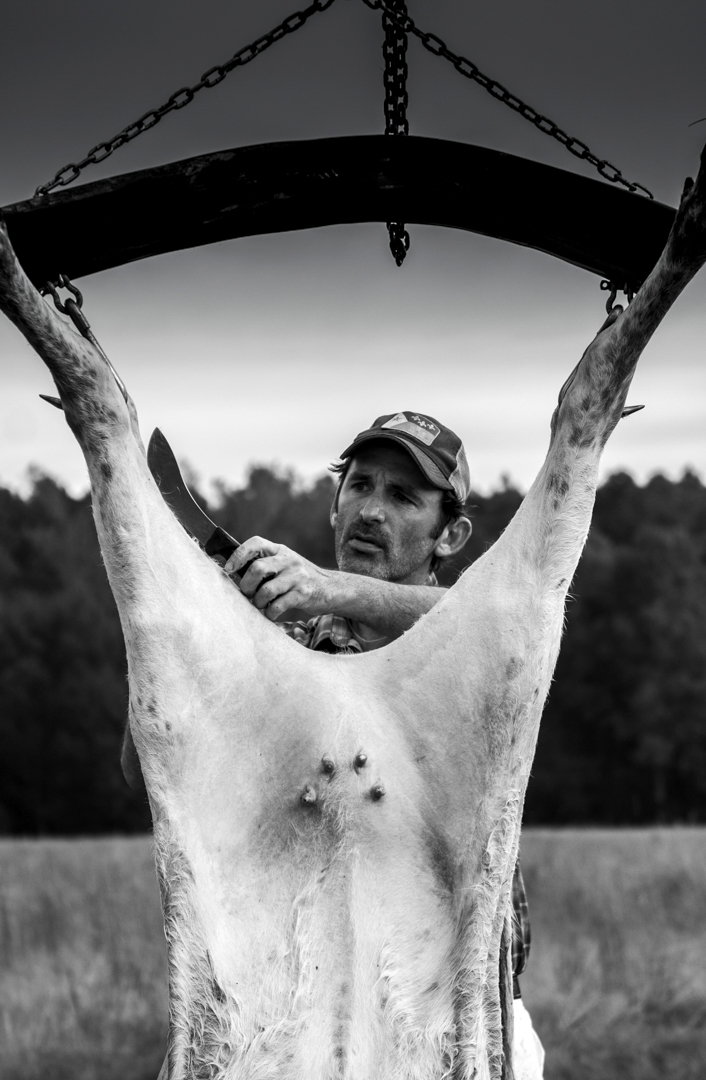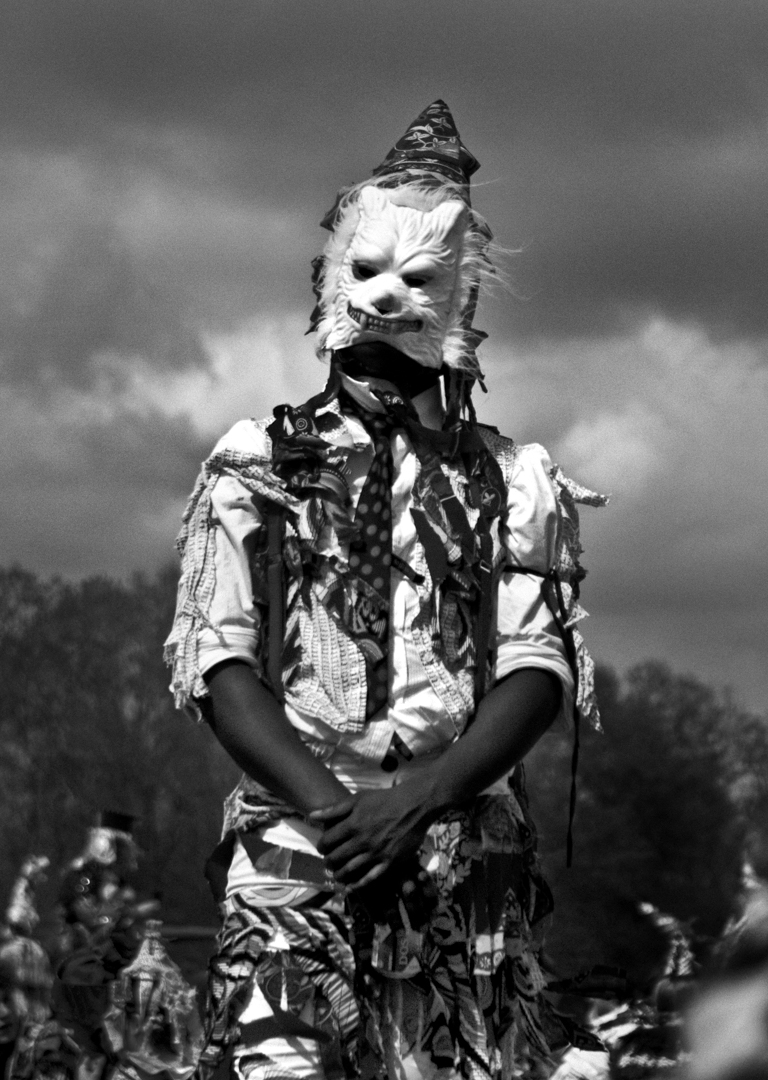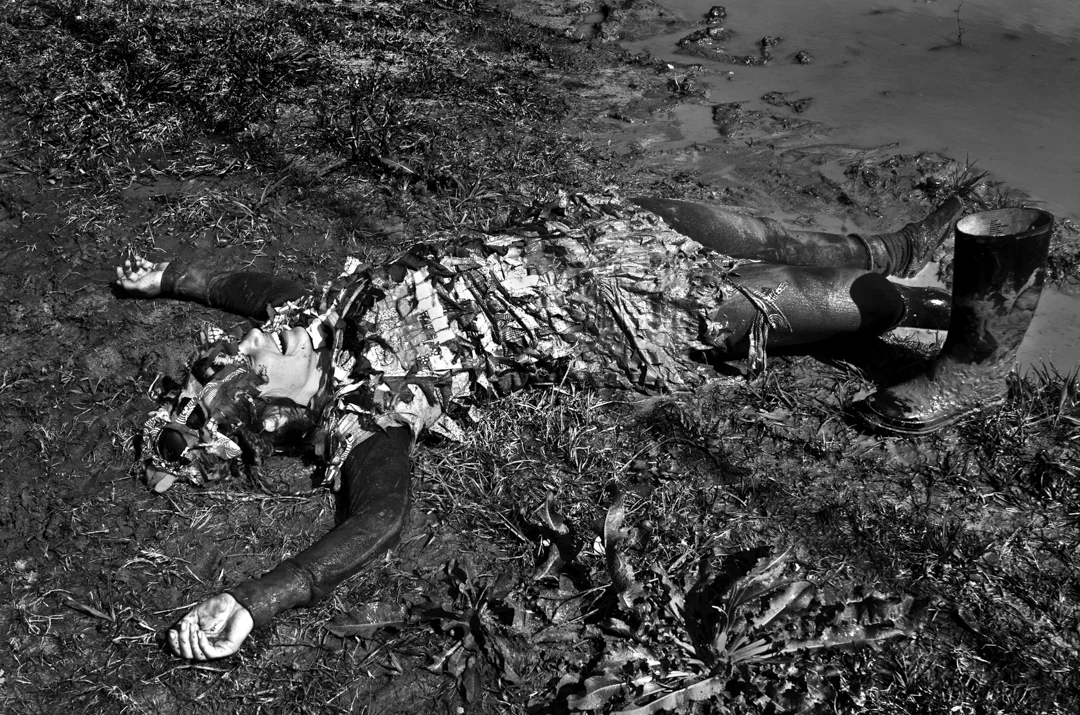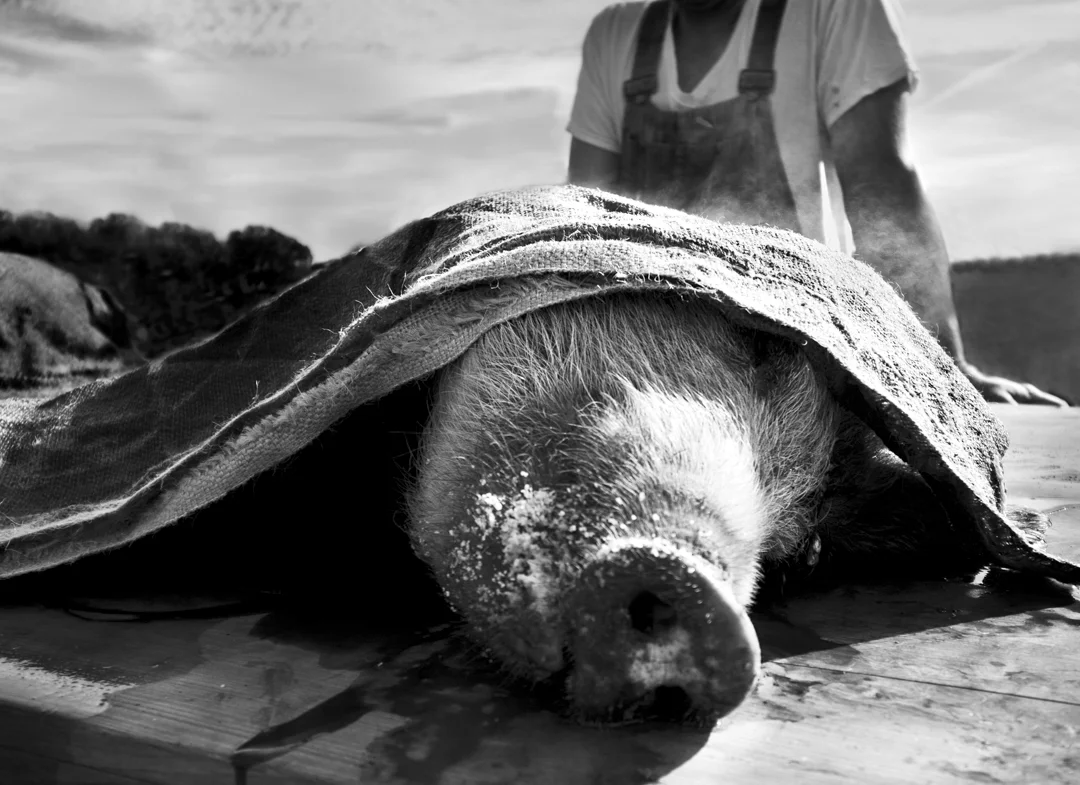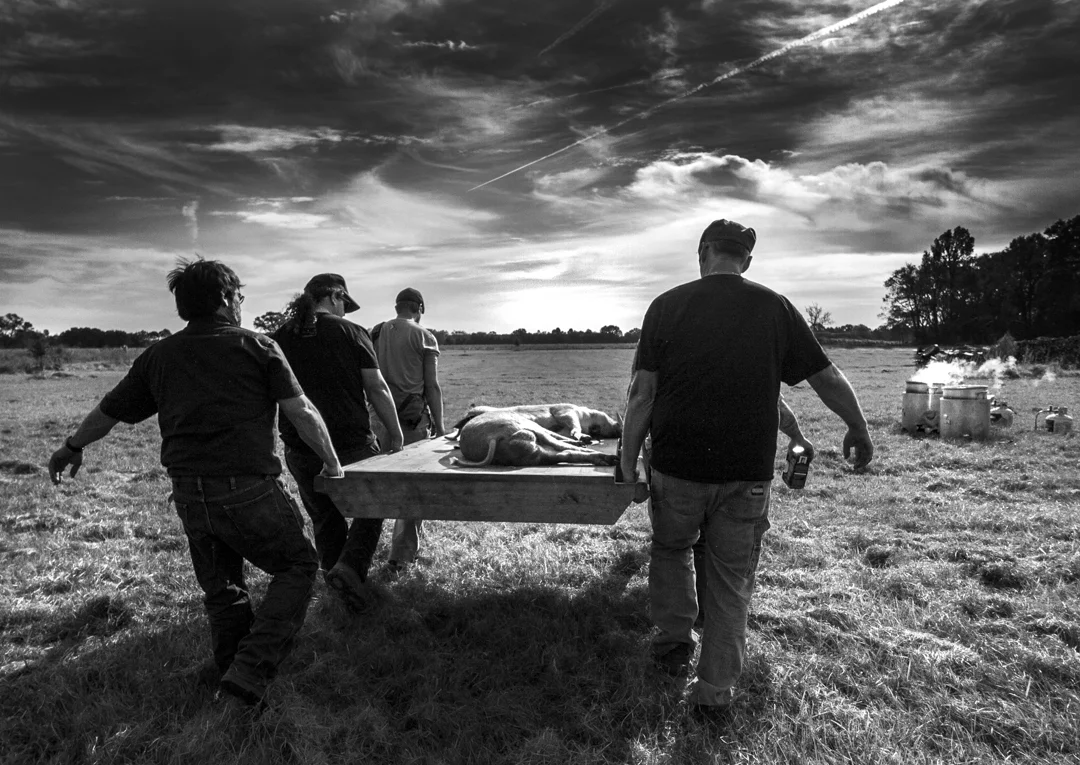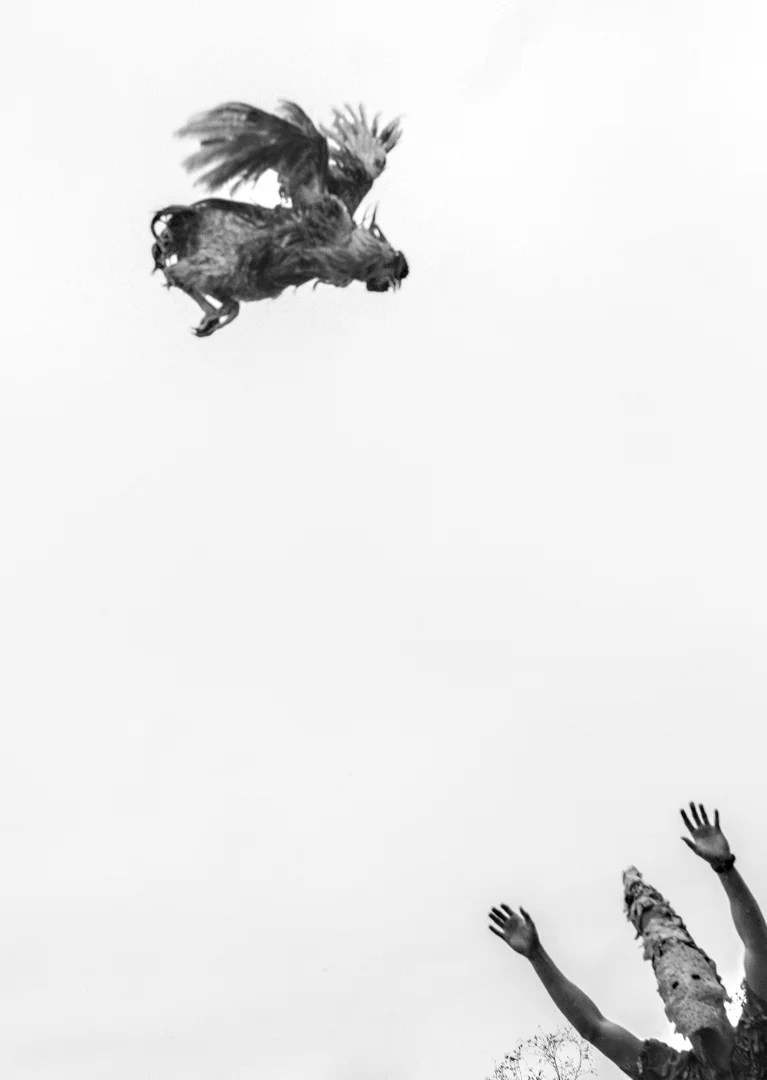The Cajun Mardi Gras-a Conversation with Photographer Lucius A. Fontenot
Bayou Ca-Ca © Lucius A. Fontenot
By Scarlett Davis
This year Mardi Gras is celebrated on February 13, 2018. Also known as “Fat Tuesday” or “Shrove Tuesday,” a tradition that dates back to the medieval celebrations in France. While not a Federal holiday, the people of Louisiana use the day or month to feast, dance, drink, and celebrate before Ash Wednesday and the season of Lent---in true Epicurean fashion of “eat, drink, and be merry.” Mardi Gras is celebrated around the world and differently in every city. Come down to Cajun country and experience the Cajun Mardi Gras or the Courir de Mardi Gras, which translates to “the run of the Mardi Gras” where instead of cajoling for beads, the people go from house to house asking for ingredients for a big pot of gumbo, which will be shared by the community at the end of the festivities.
The tradition has its roots in early begging rituals still practiced around the world today. Often, there is a chase of a live chicken —a star ingredient. Participants are costumed in the traditional garments of rags with tattered fringe, calico patchwork, and homemade wired hats intended to mock the Medieval clergy and nobility, all the while singing, dancing, eating, and drinking.
Photographer Lucius A. Fontenot is a native of Louisiana based in Lafayette. His work has been exhibited in Louisiana, Canada and France. His collections “Mémoire de la Boue - Mardi Gras and Mémoire de la Boue – Boucherie, along with his body of work captures the essence of Louisiana in its people, traditions, landscapes, and heritage. His photos foster the earnest of someone who truly understands where they come from and are nuanced with an inimitable love of “home.”
Cheval et les Hommes © Lucius A. Fontenot
Scarlett Davis: You ascribe that a great deal of your inspiration comes from your Louisiana milieu saying, "Louisiana is where I am from. Louisiana is who I am. Louisiana is what I do." Your photos have the unique ability to tap into the private history and traditions of the Cajun people in a way that feels accessible to both natives and outside observers alike. Why do you think that is given that the practices of Mardi Gras and the tradition of the boucherie or the communal butchering of hogs, is foreign to most people?
Lucius Fontenot: I believe it’s honesty. The honesty of the people participating in these rituals. The honesty in which I approach these subjects. We are nothing if not real here. Our traditions are practiced daily. Our culture is not play acting. We live our culture with rowdy earnestness. We are who we are and have been for almost 300 years. I think that when that kind of authenticity can be recognized it feels familiar.
SD: The title for your project Mémoire de la Boue or the memory of mud holds a kind of indigenous mystique that is instantly gravitating. Your creative mission is further explained by your notion that some traditions are so integral that they are inherited rather than learned, which is a rather beautiful and profound sentiment. Could you further explain this?
LF: I was introduced to the phrase while showing this work at a portfolio review and I really liked the idea. I think of it like terroir and wine. The environment in which we live and the traditions we keep make us who we are and we inherit this generation after generation. We are performing cultural tasks and rituals that oftentimes seem second nature. More than anything by participating in these activities we feel close to our ancestors.
SD: As a fellow Louisiana native, I really admire that your photos capture the sense of community that I grew up around with people coming together to eat, drink, and celebrate. Today we live so disconnected. Sadly, something about sharing a meal with neighbors and strangers feels almost as primitive as running after a chicken for a meal. Would you agree or disagree that this degree of community is somewhat of a lost art for society at large?
LF: I don’t know. I am very much a romantic so while south Louisiana is exceptional in its overt friendliness and sense of community I see people creating their own communities all the time even if it is purely virtual. And that may be the biggest difference. Community here means to physically be present, to share (food, grace, knowledge) and to celebrate. Maybe our slower pace of life allows for this. Louisiana is and has always been “laissez faire.”
SD: Growing up in Evangeline Parish, I would imagine that you have encountered many Mardi Gras celebrations across Acadiana. Do you ever find new traditions or practices, which you were not familiar with before? Maybe a local or a private family tradition?
LF: Oh sure. There are always little things. Every community has its own Mardi Gras chant which they sing to the neighbor in order to receive ingredients for the communal gumbo at the end of the day. Some Mardi Gras runs have “enforcers” that help the Captain keep the Mardi Gras in line. It is usually small things but they are important to that community’s Mardi Gras and identity.
SD: Were there any challenges to photographing a vibrant event like this with people running, drinking, with the additive of live animals in some cases?
LF: I have learned over the years to pack light, protect my gear and wear comfortable shoes. I’m planning on using my 4x5 camera this year to take portraits so I am sure I will run into unique and unforeseen challenges.
SD: As a photographer, you have said that you have a further appreciation for your culture with the ability to see what attracts the tourist to the area. I cannot speak for an outside observer, but I feel people are drawn to Louisiana for its strange dichotomy of being both beautiful and harsh, with reference to its terrain and climate. Is there a certain quality or condition that you look for to ignites your inspiration?
LF: There is so much here that can excite you. I had a teacher define baroque as a Louisiana Summer sky. It’s all how you look at it. I carry a camera with me at all time because I never know what I will come across. One of my favorite things to do is just drive around the countryside, going to places I haven’t been to before. There is always something out there.
SD: There is no shortage of Louisiana inspired art. How do you feel when you come across other interpretations? Do you find that Louisiana is often depicted through clichés?
LF: I do. It is really easy to do too. I’m guilty of it. With this series, I worked hard to break out simply documenting what is going on and into making work that depicts the feeling of being there - all the weird, wild, wonderful and grotesque. This is the reason that this series is in black and white. It strips away the eye candy of all the colors that these events have and gives it an otherworldly and timeless feeling which is an accurate feeling when you participate in these events. It is very zen. You are there. Things are odd. Things are fun. You are probably inebriated and you are thinking of nothing else in your life.
SD: How do you get to the heart of any culture so eloquently as you have done? What is it about the Louisiana experience that cannot be so easily imitated if you had to guess? Is it the inherent resilience of the people?
LF: Louisiana is a strange place. It seems very inhospitable. But ask anyone and they will say that it is the people, culture and sense of community here that keeps people and brings them here. You can’t simply live in south Louisiana and “get it”, you must participate in the culture to truly understand.
SD: Do you have any current or upcoming projects, which you are working on?
LF: I have a few ongoing projects and projects that I will be starting soon. “Artifact and Place” is an ongoing project that focuses on Louisiana landscapes and how man-made objects become a part of or enveloped by the environment here. I’m also working on something I call the “Maw-Maw Project” in which I take portraits of Cajun and Creole grandmothers. They are our matriarchs and the beating heart of our family. They hold our culture. The archetype of the Cajun & Creole grandmother is one that is fading and I hope to capture them before they are all gone.
SD: On a lighter note, what is your favorite local dish? Do you have a local or Cajun expression to introduce to our readers?
LF: Gumbo. It is Louisiana’s dish. Simple and delicious. It is our comfort food and it is how we give comfort. It’s the end goal of the Courir de Mardi Gras. And it is always best homemade. I always liked this quote from the late, great, King of Zydeco, Clifton Chenier - “Be who you is. If you old and ugly, be old and ugly but be who you is.”
Capitaine © Lucius A. Fontenot
Coupaché © Lucius A. Fontenot
Le Boucher de Mardi Gras © Lucius A. Fontenot
Le Loup Blanc © Lucius A. Fontenot
Mémoire de la Boue © Lucius A. Fontenot
Cochon © Lucius A. Fontenot
Procession Funéraire © Lucius A. Fontenot
Lève les Mains © Lucius A. Fontenot


